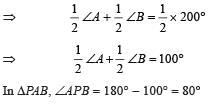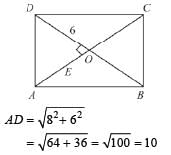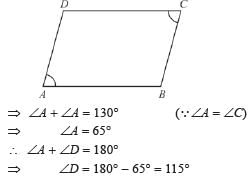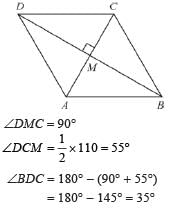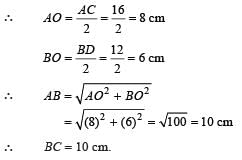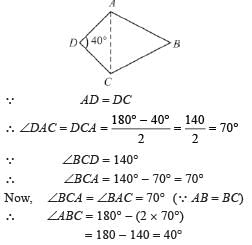Olympiad Test: Quadrilaterals - 1 - Class 8 MCQ
20 Questions MCQ Test - Olympiad Test: Quadrilaterals - 1
The four angles of a quadrilateral are in the ratio 2 : 3 : 5 : 8. Then what is the difference between largest and smallest angle of the quadrilateral?
In the given figure the bisector of ∠A and ∠B meet in a point P. If ∠C = 100°, ∠D = 60°, what is the the measure of ∠APB?
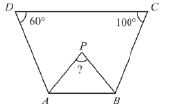

Three angles of a quadrilateral are equal and the measure of fourth angle is 120°. What is the measure of each of the equal angle?
The length of diagonals of a rhombus are 16 cm and 12 cm respectively. What is the length of each of its sides?
The sum of two opposite angles of a parallelogram is 130°. What is the difference between largest and smallest angle of parallelogram?
The bisectors of any two adjacent angles of a parallelogram intersect at
If one angle of a parallelogram is 24° less than twice the smallest angle then what is the value of largest angle of the parallelogram?
The ratio of two sides of a parallelogram is 4 : 3. If its perimeter is 56 cm, what is the difference between largest and smallest side?
In the given Fig. ABCD is a rhombus. If ∠DAB = 110°, what is ∠BDC ?

Two adjacent sides of a parallelogram are 5 cm and 7 cm long what is the perimeter of parallelogram?
Of any two adjacent sides of a parallelogram one is longer than the other by 3 cm. If the perimeter is 36 cm, then what is the length of smaller side of parallelogram?
ABCD is a rhombus, AC = 16 cm and BD = 12 cm, then what is the measure of BC?
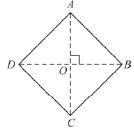
In ∆BCE, BE = EC, and ABCD is a square, and ∠BEC = 60°, then the measure of ∠BEA will be :

From the adjoining figure, find the measure of ∠EFD if AB || CD, EF || BC.

In the adjoining figure ABCD, AB = DC and AB = BC and, ∠ADC = 40° and ∠BCD = 140°, then, ∠ABC =

ABCD is a parallelogram having its sides, AB = 4x + 1 BC = 2y + 3, CD = 25, DA = y + 28, then, x + y =
PQRS is a parallelogram and ∠SPR = 50°, then find y.

If α < 90°, then, ABCD, may be a : (Given : ABCD is a parallelogram) and ∠B = 90°

If θ = 90°, and, ∠A = ∠C = 110°, then, ABCD is :

ABCD is an isosceles trapezium , i.e., AD = BC, then



